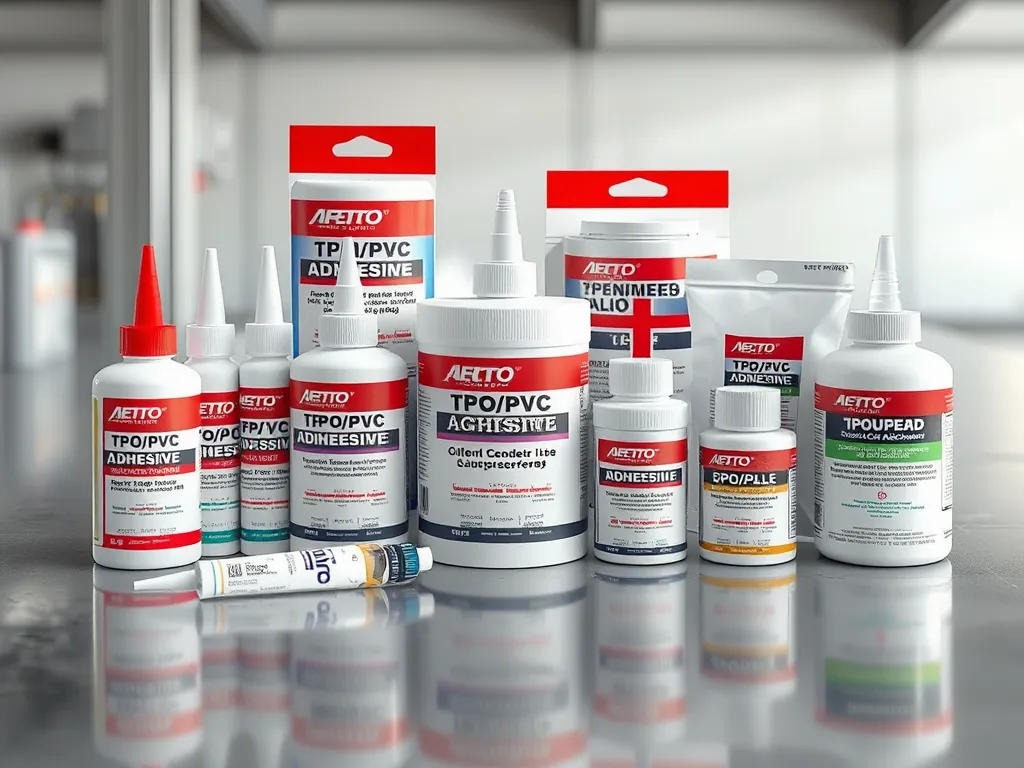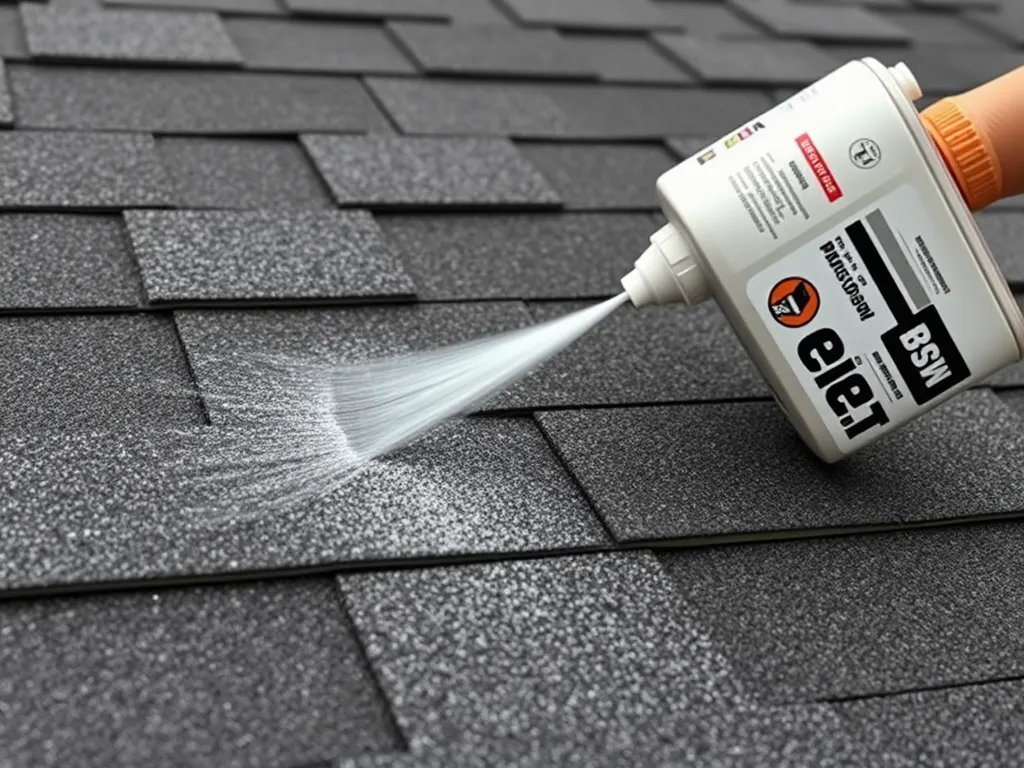Best Adhesives for Asphalt Roofing Applications: Expert Picks & Guide
Published on: August 27, 2025 | Last Updated: April 14, 2025
Written By: George Voss
The best adhesives for asphalt roofing applications include rubberized asphalt adhesives, solvent-based cements, and specialized roofing tapes designed to withstand extreme weather. These products create watertight seals, handle temperature swings from -20°F to 160°F, and bond asphalt shingles, felt, or modified bitumen membranes. Top choices like Karnak 19-KM Roof Cement ($18/gal) or Henry HE587207 WeatherBond Roofing Tape ($28/roll) offer 400% elongation for movement flexibility while maintaining 50 PSI bond strength.
This guide explores 5 key adhesive types for asphalt roofs and compares their performance in wind uplift resistance, UV stability, and cold-weather application. You’ll learn proper trowel techniques for 95% coverage, how to match adhesives to materials like TPO membranes or organic felt, and why VOC limits under 250 g/L matter for eco-friendly projects. We break down ASTM D1970 standards, curing times from 2-48 hours, and cost differences between spray-applied vs. brush-grade formulas.
Contents
Understanding Asphalt Roofing Adhesives
Asphalt roofing adhesives form the backbone of secure, weather-tight roof assemblies. These specialized compounds bond materials while sealing joints against environmental threats.
Role Of Adhesives in Asphalt Roofing Systems
Roofing adhesives serve three primary functions: sealing seams, preventing water infiltration, and resisting wind uplift. They bond asphalt shingles, underlayment, and flashing components into a unified system. High-performance options like rubberized asphalt adhesives also act as secondary barriers against ice dams and driving rain.
Key Properties Of Effective Asphalt Adhesives
Top-rated products balance multiple performance metrics. Durability depends on how well the adhesive handles environmental stress, material movement, and temperature swings.
Weather Resistance
Adhesives must withstand UV exposure, heavy rain, and freeze-thaw cycles. Premium formulations include UV inhibitors and waterproofing agents like styrene-butadiene polymers. Look for ASTM D3019 compliance, ensuring 90+ days of water immersion resistance without bond loss.
Flexibility and Bond Strength
Effective adhesives maintain elasticity across seasons. They achieve ≥500% elongation (ASTM D1970) to accommodate roof expansion. Shear strength matters too—quality products exceed 40 psi (ASTM D4501) for reliable shingle adhesion even during 110 mph winds.
Temperature Tolerance
Performance spans from -30°F to 300°F for most climates. Hot-applied asphalt cements need softening points above 185°F (ASTM D36), while cold-process adhesives require low-temperature flexibility below -20°F (ASTM D3111).
With these performance factors clarified, the next step explores specific adhesive types suited for asphalt roofing projects.
Types Of Asphalt Roofing Adhesives
Selecting the right bonding material directly impacts roof performance. Five primary options dominate modern installations, each suited to specific scenarios.
Rubberized Asphalt Adhesives
Modified with synthetic rubber polymers, these remain flexible down to -20°F. Ideal for cold climates, they bond modified bitumen membranes while resisting thermal cracking. Look for ASTM D1970 compliance when bonding EPDM or APP membranes. Common in low-slope roofs, they provide up to 500% elongation for movement accommodation.
Solvent-based Asphalt Cements
Traditional petroleum-based compounds form rigid bonds within 2-4 hours. With viscosity ratings between 3,000-5,000 cP, they penetrate granular surfaces on built-up roofs. Use trowels heated to 350°F for optimal spread rates (1 gal/100 sq ft). Note: Proper ventilation reduces fire risks from volatile organic compounds (VOCs).
Roofing Tape Adhesives
Pressure-sensitive butyl tapes simplify repairs on existing shingles. Measuring 4-6 inches wide, they create instant seals under flashing or ridge caps. Premium versions like GAF Liberty® withstand 160 mph winds without requiring tools. Peel-off release films make them popular for DIY fixes needing <30-minute cure times.
Spray Adhesives for Roofing Felt
High-solids polyurethane sprays bond #15 or #30 felt in seconds. Covering 150-200 sq ft per gallon, they eliminate wrinkles better than mopping. Ensure compatibility—some formulations degrade fiberglass backings. Test patches prevent chemical reactions before full-scale use.
Tpo/pvc-compatible Adhesives
Formulated for thermoplastic membranes, these maintain bond strength above 200°F. Products like Firestone QuickSeam® use hybrid polymers resisting oil-based contaminants. Primers with 80% solids prep surfaces, while 30-mil beads prevent moisture intrusion under single-ply systems.
With these options defined, the next step involves matching properties to project needs. Let’s examine critical factors guiding smart selections.

Key Selection Criteria for Asphalt Roof Adhesives
Choosing the best adhesive for asphalt shingles requires balancing technical specs with job-site realities. These four factors separate adequate products from premium performers.
Material Compatibility
Asphalt roofing adhesive must bond with specific substrates like modified bitumen, TPO membranes, or fiberglass shingles. Mismatched materials cause delamination – rubberized adhesives fail on PVC roofs, while standard asphalt cements degrade EPDM. Verify manufacturer specs for cross-compatibility with underlayment, flashing, and existing roof layers. For example, TPO/PVC-compatible adhesives require chemical resistance to plasticizers.
Curing Time Requirements
Cure rates range from 15-minute grab times for emergency repairs to 24-hour full cures for structural bonds. Fast-set adhesives like Henry 208 Fibered Roof Cement (20-minute tack-free time) work for quick fixes. Cold-process adhesives need 48+ hours below 50°F. Balance speed with workability – rapid curing limits repositioning shingles during installation.
Application Method (Brush, Spray, or Trowel)
Spray adhesives cover 300 sq ft/hour versus 100 sq ft/hour for trowel-applied products. Brush-grade asphalt roof adhesives like Karnak 210AC excel in tight spaces, while notched trowels create uniform 1/8″ ridges for shingle bonding. Spray systems require 60-100 PSI air compressors and compatible nozzles – GAF Liberty IR Spray Adhesive demands 0.053” tip sizes for proper atomization.
UV Resistance Ratings
Top-rated adhesives for roof shingles meet ASTM D4798/D4798M-11 standards for UV stability. Unprotected asphalt degrades in 6-12 months; quality formulations like Soprema SBS Flashing Cement retain flexibility after 5,000 kJ/m² UV exposure (equivalent to 3+ years Arizona sun). Check product datasheets for accelerated weathering test results.
Mastering these factors ensures your roofing adhesive performs as hard as your asphalt shingles. Next, we break down professional techniques to maximize bond strength during installation.
Also See: Bitumen in Asphalt Pavement Design: Key to Durability
Application Techniques for Asphalt Roofing Adhesives
Proper application methods determine the success of asphalt roofing projects. Correct techniques ensure maximum bond strength, weather resistance, and long-term performance of adhesives like rubberized asphalt or solvent-based cements.
Surface Preparation Best Practices
Surface prep accounts for 70% of adhesive performance. Skipping this step voids warranties on premium products like TPO-compatible adhesives or high-strength roofing tapes.
Cleaning and Degreasing
Power-wash surfaces at 1500-2000 PSI to remove dirt, granules, and old sealants. Use trisodium phosphate (TSP) solutions on oil stains. Dry completely before applying the best adhesive for asphalt shingles to prevent bond failure.
Moisture Control
Check substrate moisture levels with a tramex meter. Asphalt shingle adhesive requires surfaces below 12% moisture content. Apply moisture barriers like ASTM D1970-compliant underlayments in damp climates.
Adhesive Mixing and Handling
Stir solvent-based asphalt roof adhesives with spiral mixers for 3-5 minutes until achieving uniform viscosity. Maintain product temps between 50°F-80°F for optimal spread rates. Work within 45-minute pot life for most cold-process adhesives.
Proper Spreading Methods
Match application techniques to adhesive type. Spray adhesives for roofing felt need different tools than trowel-grade products for shingles.
Notched Trowel Techniques
Use 1/4″ x 1/4″ notched trowels with rubberized asphalt adhesives. Hold the tool at 45° for 85-90% coverage. This method suits the best glue for roofing shingles when sealing edges or repairing blisters.
Spray Application Guidelines
Set airless sprayers to 2200 PSI with 0.023″ tips for polymer-modified asphalt adhesives. Apply 3-5 mil thick layers across 3′ sections. Spray patterns work best with low-VOC roof adhesive for asphalt shingles on large surface areas.
Mastering these methods ensures your chosen asphalt roofing adhesive performs as engineered. Next, explore how material choices affect ecological outcomes during installation and beyond.

Environmental Considerations
Roofing adhesives impact more than installation quality. Modern formulas balance performance with ecological responsibility across three key areas.
Low-voc Adhesive Options
Volatile organic compounds (VOCs) in solvent-based products release harmful fumes during application. Low-VOC alternatives like water-based acrylics or modified bitumen adhesives maintain bond strength while cutting emissions. Many meet LEED standards at under 250 g/L VOC content. Brands like Henry 887 Tropi-Cool and GAF Liberty IR qualify as best adhesive for roof shingles in eco-sensitive projects.
Recyclability Of Adhesive Components
Asphalt roof recycling requires adhesives that won’t contaminate material streams. Thermoplastic formulas melt cleanly at 320°F, allowing separation from shingles during reprocessing. Some products incorporate up to 40% post-industrial recycled polymers. Avoid mixed-material tapes or hybrid sealants – they complicate recycling and increase landfill waste.
Long-term Durability Impact
A properly bonded roof lasts 20-30 years, reducing resource consumption from replacements. High-performance asphalt shingle adhesive meeting ASTM D638 bond strength standards (≥50 psi) prevents premature failure. Thermal cycling tests show premium polyurethane-based adhesives retain flexibility through 10,000+ temperature swings from -20°F to 160°F.
Balancing these factors ensures eco-effective roofing. Next, we’ll break down solutions for frequent installation challenges.
Frequently Asked Questions
What is the Best Sealant for Asphalt Shingles?
The best sealant for asphalt shingles typically includes products specifically designed to bond and seal shingles effectively. Look for sealants that offer flexibility, weather resistance, and compatibility with asphalt materials. Examples include rubberized asphalt sealants or high-performance silicone sealants that can withstand environmental shifts.
What Adhesive is Used for Roofing Applications?
Adhesives used for roofing applications vary based on the type of roofing material and installation method. Common types include rubberized asphalt adhesives, solvent-based asphalt cements, and roofing tape adhesives, each chosen for their unique properties and compatibility with specific roofing systems.
How to Choose Adhesive for Roofing Felt?
Choosing the right adhesive for roofing felt requires considering factors like material compatibility, curing time, and application method. Look for high-solids spray adhesives or rubberized asphalt cements designed to bond felt securely. Ensure they provide good weather resistance and flexibility to accommodate any movement.
Which Adhesive Works Best for Rubber Roofing?
The best adhesives for rubber roofing typically include those specifically formulated for EPDM membranes or TPO roofs. Products like rubberized asphalt adhesives or low-VOC polyurethane adhesives provide excellent bonding capabilities while allowing for the necessary flexibility and durability in varying temperatures.
How to Identify Proper Tube Adhesives for Roofs?
To identify proper tube adhesives for roofs, check for labels indicating compatibility with specific roofing materials. Look for seals indicating compliance with ASTM standards, along with features such as weather resistance, flexibility, and ease of application that align with your project needs.
What Features Matter in TPO Roofing Adhesives?
When selecting TPO roofing adhesives, key features to look for include compatibility with TPO membranes, high bond strength, and UV resistance. It’s also essential to consider the adhesive’s temperature tolerance and chemical resistance to oils and other contaminants that may affect long-term performance.

Closing Thoughts
Choosing the right adhesive for asphalt roofing is vital for ensuring the longevity and performance of your roof. Factors like material compatibility, curing time, and application method can influence the effectiveness of your adhesive choice. Whether you opt for rubberized asphalt adhesives, solvent-based cements, or spray options, understanding their unique properties and applications will lead to a successful roofing project.
Environmental aspects, such as low-VOC options and recyclability, are also important. They contribute to sustainable building practices while ensuring durability. Remember to adhere to best practices in surface preparation and adhesive application for optimal results.
For more in-depth information on asphalt roofing adhesives and other asphalt-related content, check out Asphalt Calculator USA. Equip yourself with the knowledge necessary for your roofing needs!
Additional Resources for You:
- Yoder, E. J., & Witczak, M. W. (1975). Principles of Pavement Design (2nd ed.). New York, NY: Wiley.
- Cold Adhesive SBS-Modified Bitumen Roofing Applications – Asphalt Roofing Manufacturers Association (ARMA)
- Asphalt – Roofing Adhesives – The Home Depot


